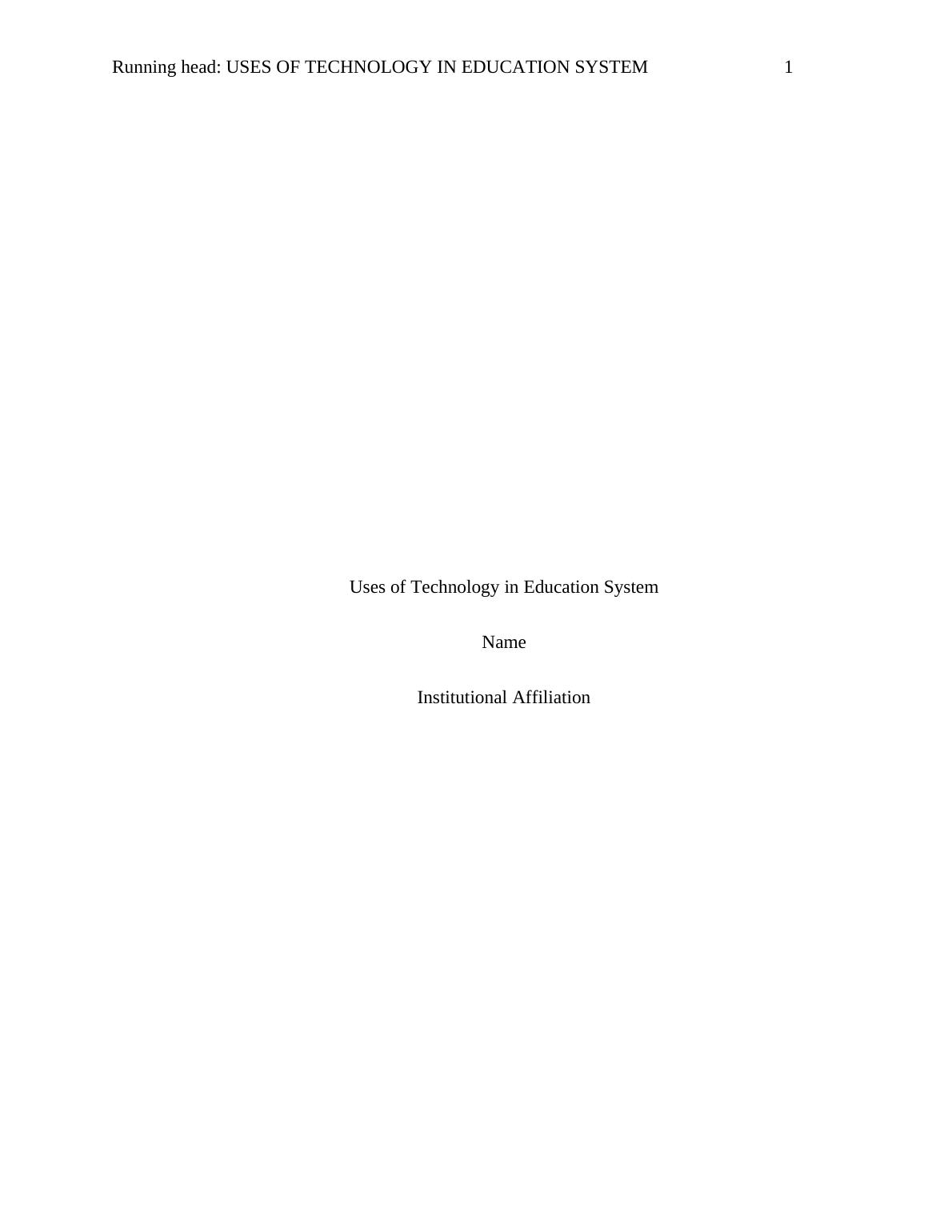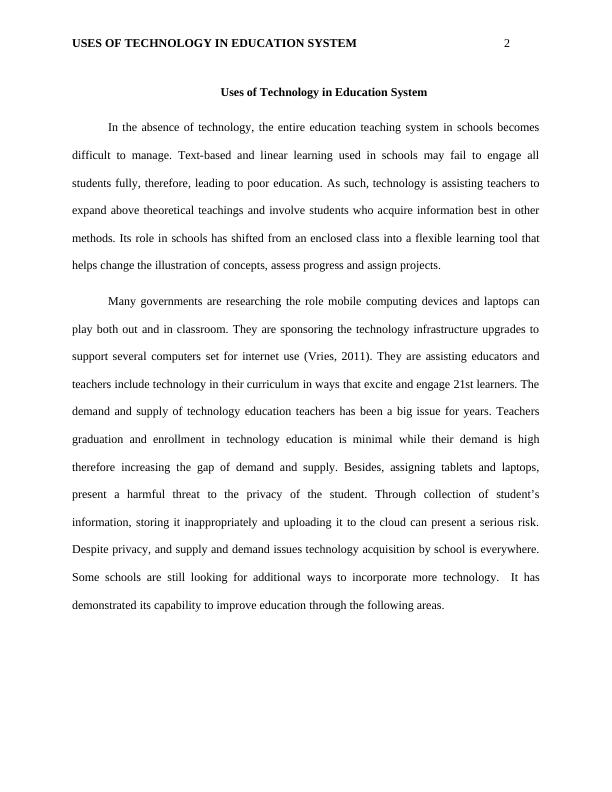Use of Technology in Education System
Added on 2020-05-16
9 Pages1574 Words417 Views
End of preview
Want to access all the pages? Upload your documents or become a member.
Teaching Technologies for Effective Learning: A Case Study of Scenario Clearwater Primary School
|7
|1460
|281
Employee Learning and Development
|7
|607
|24
Susan Kennedy: Guided Reading and Writing Lesson Plans Research 2022
|10
|2136
|25
9132IBA - Evidence-Based Decision-Making for Nurse Leaders
|9
|2256
|16
Teaching Methodologies for A Field Trip
|8
|1929
|265
How to Teach Literacy: Approaches, Resources, and Impact of Technology
|6
|1195
|497



